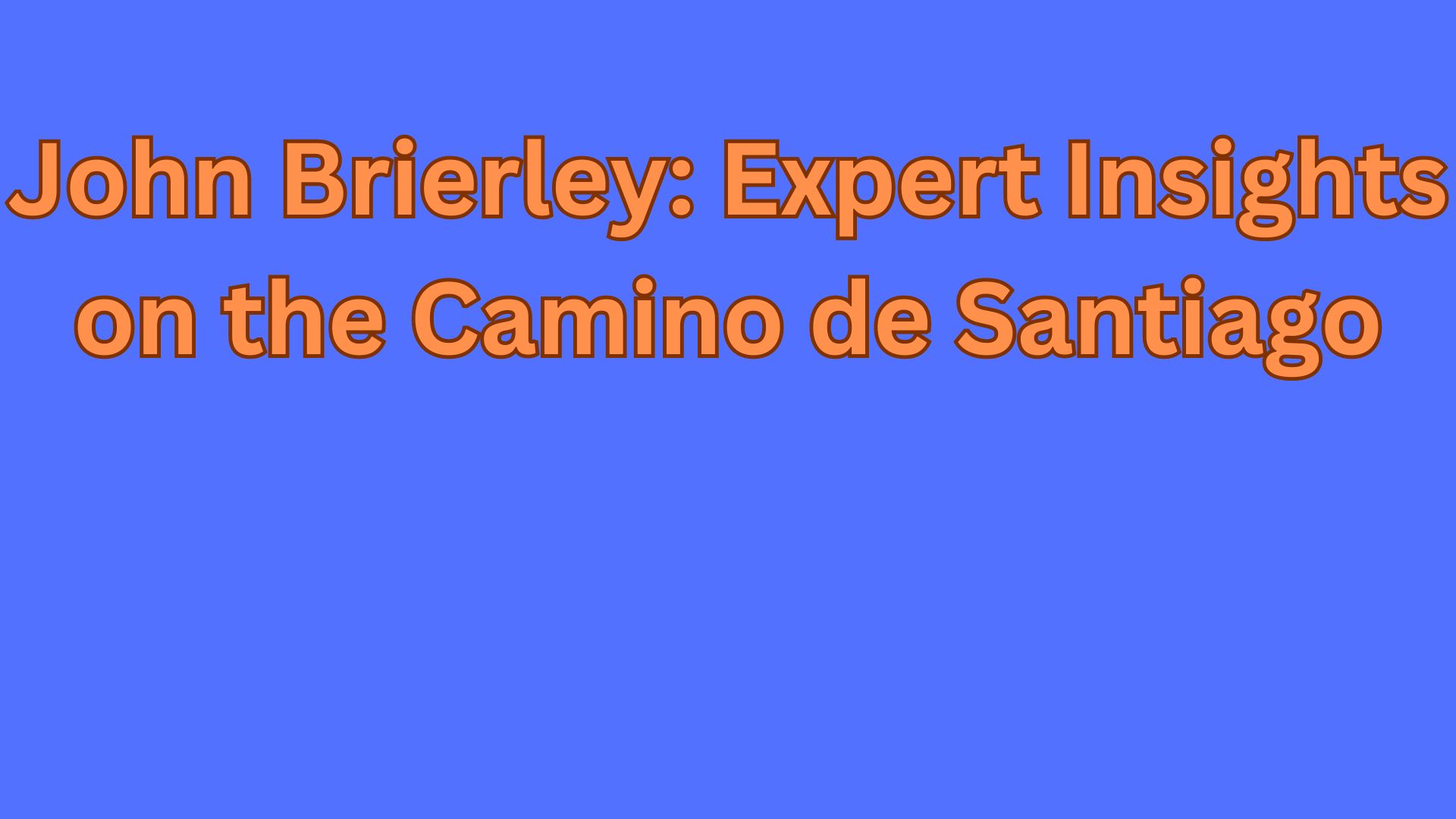The Camino de Santiago, or the Way of St. James, is one of the most famous pilgrimage routes in the world, attracting thousands of walkers each year. At the forefront of this movement is John Brierley, a renowned author, and expert on the Camino. In this article, we delve into his contributions, insights, and the essence of the Camino de Santiago as seen through his eyes.
Who is John Brierley?
John Brierley is a British author and seasoned traveler whose work has significantly shaped the modern understanding of the Camino de Santiago. His guidebooks have become essential reading for pilgrims, providing not just practical advice but also spiritual insights into the journey. Brierley’s connection to the Camino began in the 1990s when he undertook the pilgrimage himself, experiencing firsthand the transformative power of the route.
The Essence of the Camino de Santiago
The Camino de Santiago has deep historical and spiritual roots, with its origins dating back to the 9th century. Pilgrims from all over the world traverse various paths leading to the cathedral of Santiago de Compostela, where it is believed the remains of Saint James are buried. Brierley emphasizes that the Camino is not just a physical journey; it is also a profound spiritual experience.
Spiritual Significance
For many, the Camino serves as a metaphor for life itself—filled with challenges, beauty, and moments of reflection. Brierley notes that pilgrims often embark on the journey seeking answers or solace, making it a deeply personal pilgrimage. He encourages walkers to embrace both the physical exertion and the introspective moments that arise along the way.
Physical Journey
The Camino de Santiago spans over 800 kilometers from Saint-Jean-Pied-de-Port in France to Santiago de Compostela in Spain. Brierley’s detailed guidebooks break down this route into manageable stages, providing maps, accommodation suggestions, and tips for travelers. His insights help make the daunting trek more accessible, ensuring that both seasoned hikers and novices can participate.
Key Contributions of John Brierley
Brierley has authored several editions of “A Pilgrim’s Guide to the Camino de Santiago,” along with guides for specific routes and stages. His work is characterized by:
Practical Guidance
Each of Brierley’s guides includes practical information such as:
Route descriptions: Detailed information about each stage of the Camino, including terrain and landmarks.
Accommodation: Recommendations for albergues, hotels, and other lodging options, catering to various budgets.
Local cuisine: Insights into traditional dishes to try along the route, enhancing the cultural experience.
Spiritual Insights
Brierley integrates spiritual reflections and quotes throughout his guides, encouraging pilgrims to contemplate their journey’s meaning. He emphasizes the importance of mindfulness and being present, allowing walkers to connect more deeply with their surroundings and themselves.
Community Building
Through his books and lectures, Brierley has fostered a sense of community among pilgrims. He encourages walkers to share their stories and experiences, creating a supportive network that transcends borders. This sense of camaraderie is one of the most cherished aspects of the Camino.
Preparing for the Camino
Brierley provides extensive advice on preparing for the Camino, which can be both physically and mentally demanding.
Physical Preparation
Walking the Camino requires a reasonable level of fitness. Brierley suggests:
Training walks: Start with shorter walks and gradually increase distance.
Proper footwear: Invest in quality hiking boots and break them in before the journey.
Pack wisely: Carry only essentials to minimize weight, focusing on comfort and convenience.
Mental Preparation
Mental preparation is equally crucial. Brierley encourages potential pilgrims to:
Set intentions: Reflect on personal reasons for undertaking the pilgrimage.
Embrace uncertainty: Accept that not everything will go as planned, and be open to unexpected experiences.
Practice mindfulness: Engage in meditation or yoga to foster a calm and focused mindset.
Insights from Pilgrims
Brierley has collected stories from countless pilgrims, highlighting the transformative experiences they encounter. Common themes include:
Self-discovery: Many walkers report gaining clarity on life decisions or overcoming personal struggles.
Connection: The shared experience of the Camino fosters deep connections among pilgrims, often leading to lifelong friendships.
Nature’s healing: The natural beauty along the Camino serves as a source of inspiration and rejuvenation.
Conclusion
John Brierley’s insights and contributions to the Camino de Santiago have made the pilgrimage more accessible and meaningful for countless individuals. His emphasis on both the physical and spiritual aspects of the journey allows pilgrims to embark on a path of self-discovery and connection with others. Whether you’re an experienced hiker or a first-time walker, Brierley’s guidance can help you navigate the beautiful challenges of the Camino.
ALSO READ:Dr. Cory Franklin MD: Expert Insights in Medicine and Healthcare
FAQs
What is the best time to walk the Camino de Santiago?
The best time to walk the Camino is typically from late spring (May to June) and early fall (September to October), when the weather is mild and the trails are less crowded.
Do I need to be an experienced hiker to walk the Camino?
No, you don’t need to be an experienced hiker. Many routes are suitable for beginners, and with proper preparation, anyone can undertake the pilgrimage.
How long does it take to complete the Camino de Santiago?
The duration varies depending on the chosen route and pace, but the most popular Camino route (the Camino Francés) typically takes around 30-35 days to complete.
What should I pack for the Camino?
Essentials include comfortable walking shoes, weather-appropriate clothing, a lightweight backpack, a water bottle, a first-aid kit, and personal hygiene items. Pack as lightly as possible to ease your journey.
Can I walk the Camino alone?
Yes, many people choose to walk the Camino solo. It can be a deeply personal experience, and you’ll have plenty of opportunities to connect with other pilgrims along the way.







